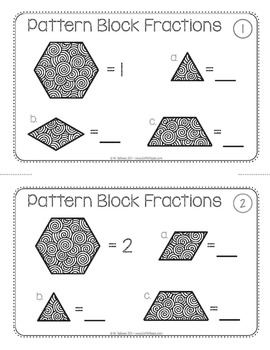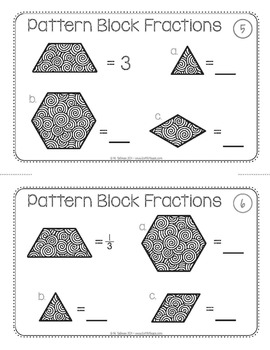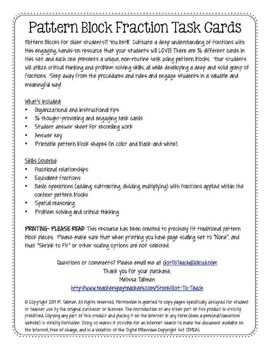Pattern Block Fraction Task Cards Math Centers
- PDF
What educators are saying
Description
Pattern Blocks for older students?! You bet!!!
Cultivate a deep understanding of fractions with this engaging, hands-on resource that your students will LOVE! There are 36 different cards in this set, and each one presents a unique, non-routine task using pattern blocks. Your students will utilize critical thinking and problem solving skills, all while developing a deep and solid grasp of fractions. Step away from the procedures and rules and engage students in a valuable and meaningful way!
What’s Included:
•Organizational and instructional tips
•36 thought-provoking and engaging task cards
•Student answer sheet for recording work
•Answer key
•Printable pattern block shapes (in color and black-and-white)
Skills Covered:
•Fractional relationships
•Equivalent fractions
•Basic operations (adding, subtracting, dividing, multiplying) with fractions applied within the context pattern blocks
•Spatial reasoning
•Problem solving and critical thinking
Save money and purchase this as part of theHands-on Math: Build Your Own Bundle!
Problem Solving with Pattern Blocks 1
Problem Solving with Pattern Blocks 2
Brain Power Math: Non-Routine Problem Solving {Book A}
Time to Tile: Equivalent Fractions
Time to Tile: Mixed Numbers and Improper Fractions
Time to Tile: Adding and Subtracting
Get all the latest Teacher Thrive news!
➜FOLLOW me on Teachers Pay Teachers!
➜FOLLOW me on TeacherThrive.com!
Please read: This is a nonrefundable digital download. Please read the description carefully and examine the preview file before purchasing.
© Copyright 2018 M. Tallman. All rights reserved. Permission is granted to copy pages specifically designed for student or teacher use by the original purchaser or licensee. This is intended to be used by one teacher unless additional licenses have been purchased. The reproduction of any other part of this product is strictly prohibited. Copying any part of this product and placing it on the Internet in any form (even a personal/classroom website) is strictly forbidden. Doing so makes it possible for an Internet search to make the document available on the Internet, free of charge, and is a violation of the Digital Millennium Copyright Act (DMCA).





